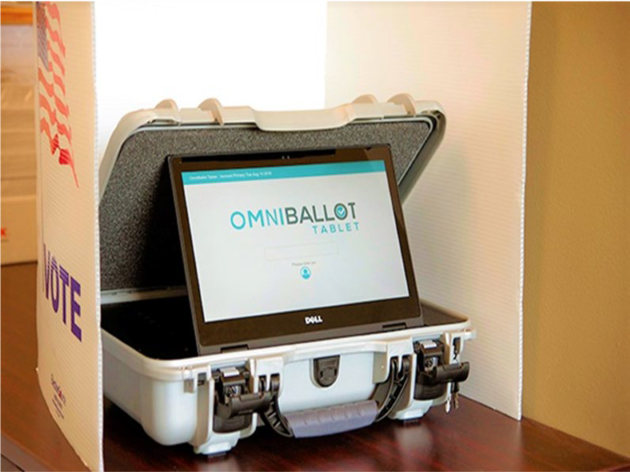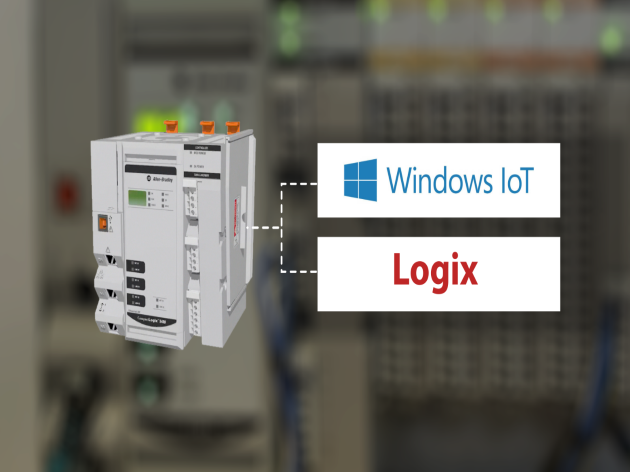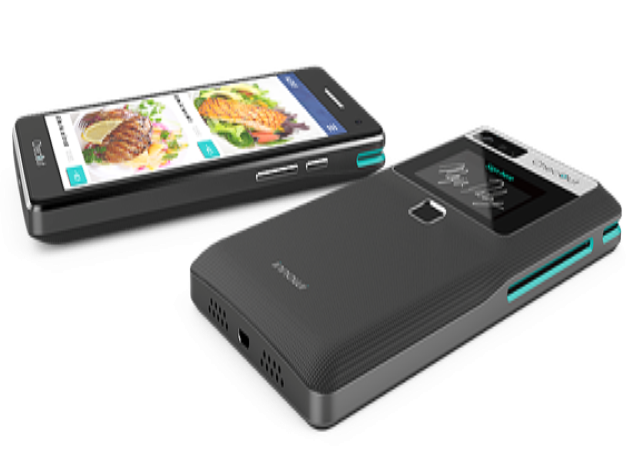- Общие сведения о Windows 10 IoT An overview of Windows 10 IoT
- Что представляет собой Windows 10 IoT What is Windows 10 IoT?
- Выпуски Windows 10 IoT Windows 10 IoT Editions
- Различия между Windows 10 IoT Базовая и Windows 10 IoT Корпоративная Differences between Windows 10 IoT Core and Windows 10 IoT Enterprise
- Различия между Windows 10 Desktop и Windows 10 IoT Базовая Differences between Windows 10 Desktop and Windows 10 IoT Core
- Различия в доступности функций в версиях Windows Desktop и IoT Базовая Different features available on Desktop and IoT Core
- Различия в поддержке драйверов Differences in driver-supported areas
- Различия в наборе доступных реестров Differences in available registry set
- Поддержка разных команд Different commands supported
- Поддержка IoT Edge в Windows 10 IoT IoT Edge Support for Windows 10 IoT
- Windows 10 IoT
- Develop with Our Products
- Windows 10 IoT Enterprise
- Windows Server IoT 2019
- Windows 10 IoT Core Services
- Benefits of Developing on the Windows IoT Platform
- Enterprise-Grade Security
- Windows Ecosystem
- Built to Last
- Azure Cloud Connectivity
- Out-of-box Solution
- Enhanced User Experience
- Device Management
- Silicon Support
- Cloud-Native Linux Compatibility
- Built-in Machine Learning
- Computer Vision
- Cognitive Services
- Build Better, Together
- From Prototype to Production
Общие сведения о Windows 10 IoT An overview of Windows 10 IoT
Контейнеры Windows для коммерческого развертывания поддерживаются в Windows Server, Windows IoT Server, Windows IoT Корпоративная и Windows IoT Базовая. Windows Containers are supported for commercial deployments on Windows Server, Windows IoT Server, Windows IoT Enterprise and Windows IoT Core. Начиная с обновления Windows 2018 за октябрь (сборка 17763), контейнеры Windows можно использовать только с Windows Корпоративная и Профессиональная для разработки и тестирования. As of Windows October Update 2018 (Build 17763), Windows Containers can only be used with Windows Enterprise and Professional for dev/test purposes.
Что представляет собой Windows 10 IoT What is Windows 10 IoT?
Windows 10 IoT — это продукт семейства Windows 10, обеспечивающий производительность, безопасность и управляемость корпоративного уровня для Интернета вещей. Windows 10 IoT is a member of the Windows 10 family that brings enterprise-class power, security, and manageability to the Internet of Things. В ней используются процессы, экосистема и облачные подключения платформы Windows, что позволяет организациям создавать системы Интернета вещей с защищенными устройствами, которые можно быстро подготавливать, легко контролировать и без проблем подключать к общей облачной системе. It leverages Windows’ embedded experience, ecosystem and cloud connectivity, allowing organizations to create their Internet of Things with secure devices that can be quickly provisioned, easily managed, and seamlessly connected to an overall cloud strategy.
Выпуски Windows 10 IoT Windows 10 IoT Editions
Система Windows 10 IoT предоставляется в двух выпусках. Windows 10 IoT comes in two editions. Windows 10 IoT Базовая — это младший продукт в линейке операционных систем Windows 10. Windows 10 IoT Core is the smallest member of the Windows 10 operating system family. Она умеет выполнять только одно приложение, но обеспечивает полную управляемость и безопасность, характерные для Windows 10. While only running a single app, it still has the manageability and security expected from Windows 10. В отличие от нее, Windows 10 IoT Корпоративная является полной версией Windows 10 с множеством функций для создания специализированных устройств со строго заданным набором приложений и периферийных устройств. By contrast, Windows 10 IoT Enterprise is a full version of Windows 10 with specialized features to create dedicated devices locked down to a specific set of applications and peripherals.
Различия между Windows 10 IoT Базовая и Windows 10 IoT Корпоративная Differences between Windows 10 IoT Core and Windows 10 IoT Enterprise
Хотя Windows 10 IoT Базовая и Windows 10 IoT Корпоративная имеют сходные названия, их возможности и уровни поддержки существенно различаются. While Windows 10 IoT Core and Windows 10 IoT Enterprise are similar in name, there are differences in what they offer as well as what they support. Ниже приведен список функций, подчеркивающих различия между этими выпусками. Below is a feature list that highlights edition differences.
Компонент / Выпуск Feature / Edition Windows 10 IoT Базовая Windows 10 IoT Core Windows 10 IoT Корпоративная Windows 10 IoT Enterprise Возможности для пользователя User experience Одно активное приложение UWP одновременно (работа с фоновым стеком описана в документации по IoT оболочки) с поддержкой фоновых приложений и служб. One UWP app in the foreground at a time (see IoT Shell documentation for app backstack handling) with supporting background apps and services. Традиционная оболочка Windows с расширенными функциями блокировки Traditional Windows Shell with Advanced Lockdown Features Поддерживается работа без монитора Headless supported Да Yes Да Yes Поддерживаемая архитектура приложений App architecture supported Только пользовательский интерфейс универсальной платформы Windows UWP UI only Полная поддержка пользовательского интерфейса Windows (например, UWP, WinForms, и т. д.) Full Windows UI support (e.g. UWP, WinForms, etc) Кортана Cortana Пакет SDK для Кортаны Cortana SDK Да Yes Присоединение к домену Domain join Только AAD AAD only AAD и традиционный домен AAD and Traditional Domain Управление Management MDM MDM MDM MDM Технологии безопасности устройств Device Security Technologies Доверенный платформенный модуль, Secure Boot, BitLocker, Device Guard и аттестация работоспособности устройств TPM, Secure Boot, BitLocker, Device Guard, and Device Health Attestation Доверенный платформенный модуль, Secure Boot, BitLocker, Device Guard и аттестация работоспособности устройств TPM, Secure Boot, BitLocker, Device Guard and Device Health Attestation Поддержка архитектуры ARM CPU Architecture support x86, x64 и ARM x86, x64, and ARM x86 и x64 x86 and x64 Лицензирование Licensing Лицензионное соглашение для Интернета и соглашения для встроенных OEM систем, без отчислений Online Licensing Agreement and Embedded OEM Agreements, Royalty-free Прямые и косвенные соглашения для встроенных OEM систем Direct and Indirect Embedded OEM Agreements Сценарии использования Usage scenarios Цифровые подписи, интеллектуальные здания, шлюз Интернета вещей, компьютерный интерфейс, умный дом, носимая электроника Digital Signage, Smart Building, IoT Gateway, HMI, Smart Home, Wearables Промышленные планшеты, точки продаж, киоски, цифровые вывески, банкоматы, медицинские устройства, производственное оборудование, тонкий клиент Industry Tablets, Retail Point of Service, Kiosk, Digital Signage, ATM, Medical Devices, Manufacturing Devices, Thin Client
Сведения о минимальных требованиях см. на сайте оборудования для Windows. For minimum requirement details, please visit the Windows Hardware site.
Если вы хотите узнать больше о точках продаж, посетите раздел документации UWP по этой теме. If you’re interested in learning more about Point of Service, please visit the UWP docs on this topic.
Различия между Windows 10 Desktop и Windows 10 IoT Базовая Differences between Windows 10 Desktop and Windows 10 IoT Core
Различия в доступности функций в версиях Windows Desktop и IoT Базовая Different features available on Desktop and IoT Core
- Папка «Входящие» для Кортаны теперь недоступна в Windows 10 IoT Базовая, начиная с версии 1809 (17763). Inbox Cortana is no longer available on Windows 10 IoT Core since version 1809 (17763). Если вам нужно быстро вывести на рынок устройства с поддержкой голосового взаимодействия, вы можете интегрировать поддержку Кортаны в устройства с помощью предварительной версии пакета SDK для устройств с Кортаной. If you are looking to bring a voice-enabled device to market quickly, you can integrate Cortana support into the device using the preview of the Cortana Devices SDK.
- API FileOpenPicker не поддерживается в Windows 10 IoT Базовая. The FileOpenPicker API is not supported in Windows 10 IoT Core. Чтобы обращаться к локальным дискам или съемным носителям, эту функцию нужно реализовать в самом приложении. To access local drives or removable storage, you can implement this in your own application.
- Устройство под управлением Windows 10 IoT Базовая будет загружать приложение по умолчанию, а не интерфейс настольного компьютера. The Windows 10 IoT Core device will boot to the default app instead of a desktop-like PC. Это приложение не только предоставляет удобную оболочку для взаимодействия после загрузки, но и позволяет использовать для приложения открытый код, чтобы вы могли применять эти функции для установки и запуска собственных пользовательских приложений с автоматической настройкой. The purpose of this application is not only to provide you with a friendly shell to interact with upon first boot, but to also allow you to use the open-sourced code for this application so that you can use these features to plug and play your own custom application(s).
Различия в поддержке драйверов Differences in driver-supported areas
- Windows 10 Desktop поддерживает большее количество драйверов, чем Windows 10 IoT Базовая. Windows 10 Desktop has more supported drivers than Windows 10 IoT Core. Чтобы те же устройства работали в Windows 10 IoT Базовая, может потребоваться компиляция драйвера из исходного кода для конкретного устройства Windows 10 IoT Базовая или другой обходной путь, особенно при работе с архитектурой ARM. To make the same device(s) work on Windows 10 IoT Core as on Desktop, you may need to build a driver from source for a Windows 10 IoT Core device or find another workaround, especially for ARM architecture.
- Для libusb в Windows 10 IoT Базовая (ARM) не существует стандартного драйвера. Вам потребуется скомпилировать его из исходного кода для использования в архитектуре ARM. There is no out-of-the-box driver for libusb for Windows 10 IoT Core (ARM) — you will need to build from source to target the ARM architecture.
Различия в наборе доступных реестров Differences in available registry set
- На рабочем столе есть параметр «Автоматически скрыть полосы прокрутки в Windows», который вы можете отключить. On desktop, there is an option to «Automatically hide scroll bars in Windows» that can be set to off. Он управляется следующим значением реестра: It is controlled by the following registry entry:
- Этот раздел реестра по умолчанию не существует на устройствах с Windows 10 IoT Базовая. There is no such registry on Windows 10 IoT Core devices by default. Если вам нужен раздел реестра Dynamic Scrollbars, его придется добавить самостоятельно. You will need to add a «Dynamic Scrollbars» register if you want.
- Чтобы автоматически скрывать полосы прокрутки в приложении универсальной платформы Windows, добавьте раздел DynamicScrollbars и присвойте ему значение 1, как показано ниже: To enable hide scroll bars automatically in a UWP application, you can add the «DynamicScrollbars» register and set the value to «1» like this:
- Этот раздел реестра нужно настраивать из учетной записи по умолчанию. The registry key must be set from the Default Account. Если параметр ScrollViewer XAML имеет значение Visible, значение 0 в параметре реестра приведет к отображению полосы прокрутки независимо от того, требуется ли для содержимого отображение полос прокрутки в пользовательском интерфейсе. If the ScrollViewer’s XAML setting is «Visible», the registry setting of 0 will force the scroll bar to appear regardless of whether there is sufficient content to have the scroll appear in the UI. Значение 1 в параметре реестра сохраняет полосу прокрутки скрытой, пока отсутствует содержимое достаточного объема. A registry setting of 1 will keep the scroll bar hidden until there is sufficient content.
- Наконец, если параметр ScrollViewer XAML имеет значение Auto, при значении 0 для параметра реестра полная полоса прокрутки будет отображаться только при наличии содержимого достаточного объема. Lastly, if the ScrollViewer XAML’s setting is «Auto» then the registry setting of 0 will only show the full scroll bar when there is enough content to display the scroll bar. Если параметр реестра имеет значение 1, полоса прокрутки будет отображаться при наличии содержимого или скрываться при отсутствии содержимого. When the registry setting is 1, the scroll bar will appear then when there is enough content or hidden if there is no content.
Поддержка разных команд Different commands supported
- Команда PowerShell Remove-AppxPackage работает в версии Desktop, но не работает в Windows 10 IoT Базовая. The PowerShell Remove-AppxPackage command works on Desktop but not on Windows 10 IoT Core.
- Универсальным приложениям Windows доступны не все папки на устройстве. Not all folders on your device are accessible by Universal Windows Apps. В Windows 10 IoT Базовая вы можете использовать средство FolderPermissions, чтобы предоставить приложениям UWP доступ к папке. On Windows 10 IoT Core, you can use the FolderPermissions tool to make a folder accessible to a UWP app. Например, запустите команду FolderPermissions c:\test -e, чтобы предоставить приложениям универсальной платформы Windows доступ к папке c:\test. For example, run FolderPermissions c:\test -e to give UWP apps access to c:\test folder. В версии Desktop так сделать нельзя. However, this is not available on Desktop.
Упомянутые в этой публикации команды могут со временем измениться, поскольку Windows 10 IoT Базовая совершенствуется. Commands shown in this post may change as time goes on since Windows 10 IoT Core keeps updating.
Поддержка IoT Edge в Windows 10 IoT IoT Edge Support for Windows 10 IoT
Чтобы узнать больше о поддержке IoT Edge в Windows 10 IoT, изучите раздел об операционных системах из этой статьи об Azure IoT Edge. To learn more about IoT Edge support for Windows 10 IoT, please read more about «Operating Systems» in the Azure IoT Edge article here.
Windows 10 IoT
Windows 10 IoT is a member of the Windows 10 product family that brings enterprise-class power, security, and manageability to the Internet of Things. Today, there are over 10,000 Windows IoT partners from the Edge to the Azure Cloud.
Develop with Our Products
Learn more about which Windows IoT Solution is right for you
Windows 10 IoT Enterprise
With the power of Windows, Windows 10 IoT Enterprise brings all the benefits – and development familiarity – of the worldwide Windows ecosystem to IoT.
Windows Server IoT 2019
As IoT solutions become more complex, they require more computing power, storage and connectivity. Windows Server IoT 2019 can easily handle large workloads locally or in the cloud.
Windows 10 IoT Core Services
A new cloud services subscription that provides the essential services and provides long term service support for secured smart devices running Windows 10 IoT Core.
Benefits of Developing on the Windows IoT Platform
Learn more about why developers choose Windows IoT as their OS and integrate with Azure Services for a comprehensive IoT solution
Enterprise-Grade Security
Windows IoT comes with the same capabilities as Windows 10 Enterprise​, which includes advanced device encryption​, and virtualization-based security features. Also, Microsoft has a team of top security experts monitoring the platform 24/7, 365 days a year.​​
Windows Ecosystem
When you develop with Windows, you join our world-wide partner ecosystem across hardware and software solutions, integrations, and services. Experience our continually evolving feature set, and developer friendly tools, for a smooth device-building experience.​​
Built to Last
Windows IoT provides 10-Year OS Lifecycle Support that is guaranteed with no hidden costs​ through our Long-Term Servicing Channel (LTSC). Windows IoT operating systems support backwards compatibility in line with Microsoft’s application compatibility promise.
Azure Cloud Connectivity
With Windows IoT you can use Azure services as building blocks to construct customized IoT solutions. Azure provides the industry’s broadest portfolio of cloud services and capabilities according to your needs and with the requirements from your industry.
Out-of-box Solution
Windows IoT provides customers with the best in-box value. Windows IoT has advanced built-in device and user experience lockdown capabilities for OEM branding and customization, and a turnkey kiosk mode experience with the new Microsoft Edge browser.
Enhanced User Experience
Windows IoT devices can take advantage of the built-in accessibility, natural user interface and best-in-class graphics support (same as what’s used for Xbox & PCs) to enable a great end-user experience​ for solutions such as digital signs, kiosks and POS systems.
Device Management
Windows IoT is compatible with any existing device management solution. Through device management features, you have complete control to customize and create an advanced user experience with built-in lockdown capabilities, and branding features.
Silicon Support
Windows IoT has an expanded portfolio of silicon offerings (x64 & ARM64) and support from various partners such as Intel, AMD, and Qualcomm, for lower cost, longer lifecycle and increased security for devices and support customers across all industry verticals.
Cloud-Native Linux Compatibility
With Windows IoT, you can build a solution to have end-to-end Azure integration by running native Azure IoT Edge modules in a Linux container side-by-side with Win32 and UWP apps enabling a full interop between apps and cloud workloads.
Built-in Machine Learning
Windows ML enables devices to evaluate cloud trained ML models at the edge with hardware acceleration. The option to evaluate ML models locally on lets you address a broader range of scenarios and removes concerns of connectivity, bandwidth and data privacy.​
Computer Vision
The advanced Windows camera stack coupled with Azure’s Computer Vision service gives you access to advanced algorithms that process images and return information based on the visual features you are interested in such as object detection or description.
Cognitive Services
Learn how to use the Windows IoT platform to support cognitive services features to build intelligent devices and interpret your user needs. Windows IoT in-box includes features include support for speech processing, computer vision, and facial analysis.
Build Better, Together
See how others have transformed their businesses using Windows for IoT with Azure Integration
“Our new smart fuel dispensing user experience platform presents the customer with relevant and customized information, videos, news, and music, making that experience fast, simple, relevant, friendly, and fun. The platform is able to personalize that interaction—like a retailer’s handshake with their customer, which they haven’t had before.”
Scott Negley, Director of Dispenser Products at Dover Fueling Solutions
“We deploy to cities and venues with 10- to 15-year contracts. We chose Windows 10 Enterprise LTSC so we won’t have to worry about running out of security patches, functionality, or support. We need to have a partner that is with us for the whole ride.”
Arthur van de Poll, Founder and CEO of CityBeacon Inc.
“By leveraging Windows IoT and Dell off-the-shelf hardware, we were able to drive up the levels of security and accessibility, while driving down the costs to the taxpayers. We are glad to help bring the highest levels of accessibility and security into polling places across the country.”
Bryan Finney, President/Founder of Democracy Live
“Customers don’t need to be IT experts to use Rockwell Automation products with Windows 10 IoT, and it’s a way to reduce the learning curve and still have that rich data directly available on the plant floor.”
Keith Staninger, Global Business Director at Rockwell Automation
“Imagine a holiday period like Black Friday, when lines typically get insane. The ChecOut M device with Windows 10 IoT can scan tags and barcodes in a fraction of a second. In the industry, that’s called line-busting because you can take and close out an order from anywhere in the store.”
Jeffrey Brooks, Chief Marketing Officer at Innowi
From Prototype to Production
Learn how to develop Windows IoT devices to meet your needs























